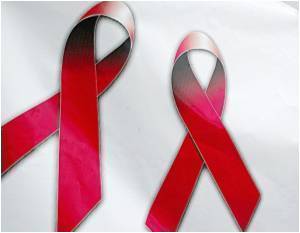Inspite of drug therapy, HIV has a tendency to hide certain types of cells, which then reproduce and give rise to chronic inflammation.

"Powerful antiretroviral drug cocktails have allowed many HIV patients to live longer," explained Servio H. Ramirez, PhD, Assistant Professor of Pathology and Laboratory Medicine at Temple University School of Medicine (TUSM), and first author on the study.
But living longer with HIV means extended exposure to low levels of HIV replication and associated inflammation. In the central nervous system (CNS), this inflammatory process is thought to be the underlying cause of HIV-associated neurocognitive disorder (HAND), a spectrum of conditions that is on the rise again after more than a decade of decline following the advent of antiretroviral therapy.
To better understand the connection between inflammation and neurocognitive conditions linked to long-term exposure to HIV, Ramirez and colleagues looked specifically at the CB2 receptor, a protein located on the surface of macrophages.
CB2 is a binding site for substances called cannabinoids, the primary active compounds of cannabis (marijuana), and it may play a role in blocking inflammation in the CNS. Unlike its counterpart, the CB1 receptor, which is found primarily on neurons in the brain, CB2 does not mediate the psychoactive effects for which cannabis is popularly known.
Ramirez explained that there has been much pharmacological interest in developing agents that selectively target CB2. Ideally, these compounds would help limit chronic inflammatory responses and would not bind to CB1. The most promising compounds are those derived from THC (tetrahydrocannabinol), the main active substance in cannabis.
Advertisement
According to Ramirez and the study's senior investigator, Yuri Persidsky, MD, PhD, Chair of the Department of Pathology and Laboratory Medicine at TUSM, macrophages likely are the primary reservoir for HIV. They are among the first cells to become infected following sexual transmission of the virus, and they are found in every organ of the human body and circulate in the blood. It is currently thought that macrophages may be responsible for introducing HIV into the brain, ultimately initiating HIV-associated cognitive decline.
Advertisement
The results suggest that selective CB2 agonists could potentially be used in tandem with existing antiretroviral drugs, opening the door to the generation of new drug therapies for HIV/AIDS. The data also support the idea that the human immune system could be leveraged to fight HIV infection.
"Our study suggests that the body's own natural defenses can be made more powerful to fight some of the worst symptoms of HIV," Persidsky explained. He also noted that stimulating CB2 receptors in white blood cells could produce similar benefits against other viral infections.
The team plans next to perform further screening studies using other novel CB2 agonists in parallel with studies that can help uncover the molecular events within the cell that regulate the effect of CB2 on HIV.
Source-ANI













